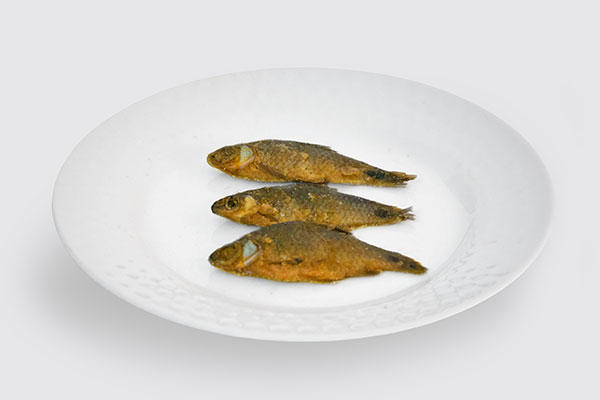Tungtap is a popular fermented fish product commonly prepared and consumed by the Khasi and Jaintia tribes of Meghalaya in the North-Eastern state of India. Their practice of fermenting fish is similar to the traditional methods of preserving fish in South-East Asia. Though, a distinctive feature is that it does not fall under the category of fish paste or fish sauce but it’s consumed as a pickle and a taste enhancer.
Many tribes of the North-Eastern states of India consume fermented fish but, the preparation of tungtap is distinctively different from other fermented fish products such as ngari (Puntius sophore), hentak (Esomus danricus) of Manipur. The uniqueness of this process is that the fish is previously dried to very low water activity which renders favourable conditions for microbial growth. So, let’s go ahead and see how tungtap is fermented in the traditional way.
Fishes, biologically known as Puntius spp. and Danio spp. are collected from local rivers from the southern parts of Meghalaya like Dawki and Shella popularly known as the Brahmaputra valley and Bangladesh. These fishes are washed properly, and then are sun dried for 3-4 days and kept in jute bags. They are salted in salt: fish ratio of 1:10. The dried fish are sorted in batches of 30-40kgs and supplemented in some amount of fish fats. Then, they are packed in earthen pots and sealed using fish scales, mud and oil slurry or polythene sheets to make the earthen pots tight. These earthen pots are then kept in room temperature of 18-28 degree Celsius for 2-6 months. Although, the fish remains in its original shape, it gets softened due to pre-salting of fish prior to fermentation. Micro-organisms play an important role in the later stage of fish fermentation leading to degradation of tissue proteins. Once the fish fermentation is complete, it develops a slightly brownish pale colour with unique aroma compared to the fresh unfermented fish. They are taken out from the pots and are sold in the local markets, ready to be prepared as a mouth-watering side dish.

